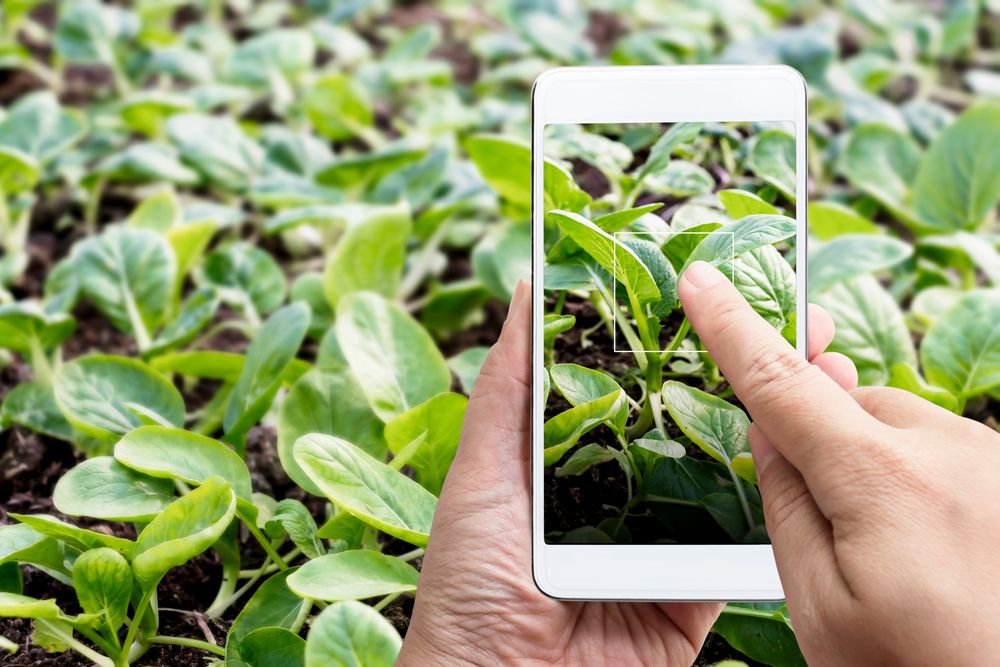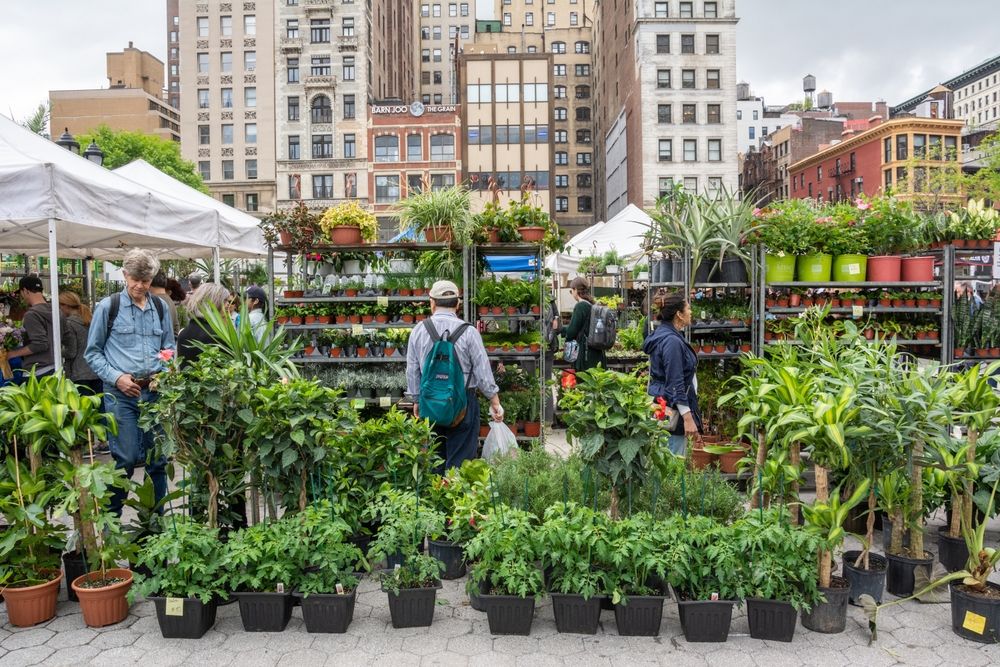Marketing Plants Online and In Real Life: Strategies for the Horticulture Industry - Speaker Spotlight: Glee 2024
)
 |
Michael Perry - also known as Mr Plant Geek - has a history of new product development, and will be bringing trend awareness and new ideas to GLEE this year. He is well connected throughout horticulture, and is an important conduit between industry and consumer, thanks to his busy and interesting social media. |
Marketing plants is no longer confined to traditional avenues. With the rise of e-commerce and online platforms, the horticulture industry has been presented with exciting new opportunities to reach a broader audience. However, even as online marketing gains prominence, physical, in-person marketing strategies remain crucial.
At Glee 2024, noted horticulture expert Michael Perry (Mr Plant Geek) explored effective ways to promote plants both online and in real life, combining digital and traditional marketing methods to drive greater success. If you missed this year's event, don't worry—we’ve provided a synopsis all the key takeaways for you.

The Rise of Online Plant Marketing
Online marketing has become a game-changer for the horticulture industry, enabling growers, nurseries and plant sellers to connect with customers nationwide – and even internationally. Here are some strategies to consider:
1. Building a User-Friendly Website
A well-designed, user-friendly website is essential for any plant business looking to make its mark online. Your website serves as a digital storefront and should convey the same attention to detail as a physical shop. For plant retailers, clear images, detailed plant descriptions and an easy-to-navigate layout are critical elements.
Make sure the site is mobile-responsive, as many users now browse and purchase via their smartphones. Customers should be able to easily search for plants, view pricing and make purchases without any complications.
Additionally, adding a blog section to your website provides an opportunity to offer valuable information on plant care, seasonal planting tips and horticulture trends. Not only does this enhance your authority in the industry, but it also improves your search engine optimisation (SEO), making your site easier to find on platforms like Google.
2. Search Engine Optimisation (SEO)
SEO is the backbone of online visibility. This involves tailoring your website and content to match search engine algorithms so that potential customers can find you more easily. For the horticulture industry, using plant-specific keywords is critical. For example, if you specialise in succulents or rare indoor plants, terms like “buy succulents online UK” or “rare houseplants” should be strategically integrated into your content.
SEO also extends beyond keyword placement. Websites with high-quality content, fast loading times, and secure transactions tend to rank better. It's worth investing in an SEO expert to ensure your website remains competitive and discoverable.
3. Social Media Marketing
Social media is an incredibly powerful tool for plant marketing. Platforms like Instagram, Facebook and Pinterest are ideal for showcasing the beauty and variety of plants. Visually-driven social platforms allow businesses to engage with customers by posting high-quality images and videos of plants, garden designs, and behind-the-scenes views of nurseries.
Instagram, for instance, has become a favourite platform for plant lovers. By using relevant hashtags like #plantsofinstagram or #gardeningtips, plant sellers can tap into a growing community of plant enthusiasts. Live streams and stories can also be used to share real-time plant care tips or host Q&A sessions.
Engagement is key – responding to comments, sharing customer posts, and creating community discussions are great ways to foster loyalty. Consider offering social media-exclusive discounts to keep your followers interested and engaged.
4. Email Marketing
Email marketing remains one of the most effective ways to communicate with customers directly. Sending regular newsletters with plant care tips, new arrivals, or seasonal promotions can keep your brand at the forefront of customers' minds. Segment your email lists to target specific groups – for instance, beginners in gardening might appreciate basic plant care tips, while more experienced gardeners may prefer information on rare species or advanced techniques.
Utilising special offers, loyalty rewards, and exclusive online sales can drive conversions through email campaigns. Remember to keep the tone friendly and informative to avoid overwhelming subscribers with constant sales pitches.

Combining Online and Offline Marketing
While online marketing opens up significant opportunities, it is essential not to overlook the value of offline, real-world interactions. Traditional marketing and physical retail experiences still play a crucial role in connecting with customers on a personal level.
1. Participating in Local Events and Markets
Local horticulture fairs, garden shows, and farmers' markets remain vital for increasing your visibility. These events allow businesses to showcase plants directly to potential buyers and establish a local presence. Not only does this provide a platform for sales, but it also allows customers to see and touch the plants before making a purchase.
Such events also provide opportunities for face-to-face customer education, building trust and a stronger connection to your brand. Furthermore, handing out business cards or promotional leaflets with your website and social media details can encourage those who visit in person to follow up with an online purchase later.
2. Creating a Strong In-Store Experience
For plant businesses with physical locations, creating an inviting and educational in-store experience is crucial. The layout should be visually appealing, with plants arranged in attractive displays. Consider including informative signs detailing plant care requirements, seasonal planting tips, and recommended companion plants to enhance the customer experience.
Customer service is just as important – knowledgeable staff who are passionate about plants and can offer expert advice will leave a lasting impression. When customers feel supported in their plant-buying journey, they are far more likely to return and recommend your business to others.
3. Traditional Print Advertising
Print advertising still has a place in the horticulture industry, particularly when targeting local audiences. Local newspapers, gardening magazines, and community newsletters are effective ways to reach potential customers in your area. Advertisements can promote special events, seasonal sales, or new arrivals at your store.
Another valuable tool is direct mail, such as catalogues or postcards, especially when combined with exclusive offers or discounts. Many customers still appreciate the tactile nature of receiving physical marketing materials, particularly if the designs are visually appealing and informative.
4. Word-of-Mouth Marketing and Loyalty Programmes
Word-of-mouth remains one of the most powerful marketing tools in the horticulture industry. Encouraging satisfied customers to leave reviews on Google or social media platforms can enhance your online reputation and attract new buyers. Positive reviews not only improve your SEO ranking but also build trust with potential customers who may not be familiar with your brand.
Loyalty programmes are another way to cultivate repeat business. Offering points for every purchase that can be redeemed for discounts or free plants encourages customers to return. Consider creating a referral programme, where existing customers receive rewards for bringing in new clients.
Embracing Sustainability in Marketing
One key trend that has gained traction in both online and real-world plant marketing is sustainability. Customers are increasingly interested in environmentally responsible businesses, so demonstrating your commitment to sustainability can set you apart.
For example, highlighting eco-friendly packaging or sustainably sourced plants can appeal to environmentally-conscious buyers. Online, businesses can share their sustainability efforts through blog posts, videos, or social media campaigns. In-store, you can promote sustainability by reducing plastic use, offering reusable plant pots, or featuring locally sourced plants that support biodiversity.
Final Thoughts
In today’s dynamic horticulture industry, successfully marketing plants requires a balance of both online and offline strategies. From establishing a strong digital presence through websites, social media, and email marketing to leveraging the value of face-to-face interactions at events, local markets, and in-store experiences, the key is to create meaningful connections with customers.
Ultimately, successful plant marketing is about education, engagement, and creating an experience that resonates with customers, whether they are browsing your website, visiting your shop, or scrolling through social media. By integrating these online and real-life marketing tactics, horticultural businesses can thrive in this competitive, ever-changing market.
